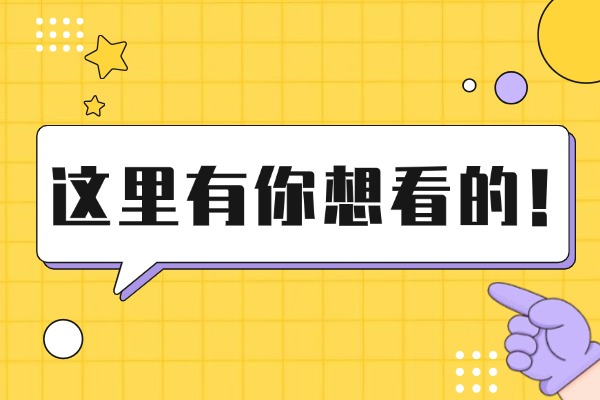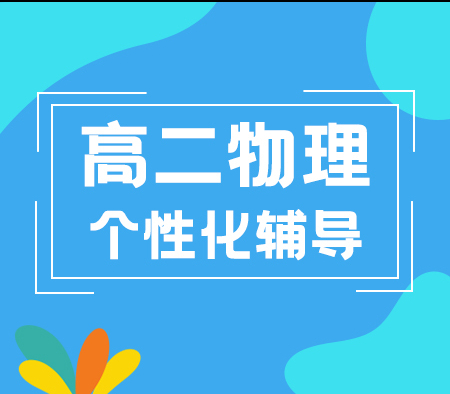2018年南通市、泰州市高三第一次调研测试英语试题及答案汇总分享!
英语学习是学生学习中比较重要的一个科目,在学生的学习中占有比较重要的作用,那么对于2018年南通市、泰州市高三第一次调研测试英语试题及答案汇总的详细内容,学生们可以详细的了解参考一下,掌握更多的学习方法,为自己的学习做好充分的准备,在有限的时间内不断的提升自己的学习能力,帮助自己更好的学好英语。

第一部分 听力 (共两节,20分)
做题时,先将答案标在试卷上。录音内容结束后,你将有两分钟的时间将试卷上的答案转涂到答题卡上。
第一节 (共5小题;每小题1分,5分)
听下面5段对话。每段对话后有一个小题,从题中所给的A、B、C三个选项中选出较佳选项,并标在试卷的相应位置。听完每段对话后,你都有10秒钟的时间来回答有关小题和阅读下一小题。每段对话仅读一遍。
1. What color is the man’s toothbrush?
A. Blue. B. Green. C. Red.
2. What is the man mostly worried about?
A. The noisy plane.
B. The safety of the airplane.
C. The service of the flight attendant.
3. How does the man feel?
A. Impatient. B. Helpless. C. Exhausted.
4. When does the girl have to go to bed?
A. At 8:00 p.m. B. At 9:00 p.m. C. At 11:00 p.m.
#p#副标题#e#
5. Where does the conversation take place?
A. At a fruit shop.
B. At a candyshop.
C. At the woman’s house.
第二节(共15小题;每小题1分,15分)
听下面5段对话或独白。每段对话或独白后有几个小题,从题中所给的A、B、C三个选项中选出较佳选项,并标在试卷的相应位置。听每段对话或独白前,你将有时间阅读各个小题,每小题5秒钟;听完后,各小题将给出5秒钟的作答时间。每段对话或独白读两遍。
听第6段材料,回答第6、7题。
6. What’s the relationship between the speakers?
A. Boss and employee. B. Co-workers. C. Classmates.
7. Why is Jane unhappy?
A. She forgot to answer some emails.
B. She talked to angry customers all morning.
C. She is usually the first one to take complaints.
听第7段材料,回答第8至10题。
8. How much will the man pay in total?
A. $20. B. $25. C. $45.
9. How did the man get his shirt dirty?
A. By cooking vegetable soup.
B. By eating noodles.
C. By washing up.
10. When will the man get his shirt back?
A. On Sunday. B. On Monday. C. On Tuesday.
听第8段材料,回答第11至13题。
11. What is the probable relationship between the speakers?
A. Schoolmates. B. Brother and sister. C. Teacher and student.
12. What just happened to Chad’s shirt?
A. He got a tea stain on it.
B. He got blue paint on it.
C. He rolled in the grass with it.
13. What will Chad do after school?
A. Tell his mother what happened.
B. Ask Betty to explain for him.
C. Buy a new shirt.
听第9段材料,回答第14至16题。
14. Where is the treehouse?
A. In Justin’s yard.
B. In Stanley’s yard.
C. In Miss Johnson’s yard.
15. How will Justin get back to the treehouse?
A. By car. B. By bike. C. On foot.
16. Why is Justin in a hurry?
A. He is afraid of thunder.
B. He thinks it’s going to rain.
C. He wants Mom to see the treehouse.
听第10段材料,回答第17至20题。
17. What is the speaker mainly talking about?
A. How to predict an earthquake.
B. How to survive an earthquake.
C. How to rescue people in an earthquake.
18. What do people need to get ready for an earthquake?
A. Shelters. B. Cars. C. Blankets.
19. What does the speaker advise people to do when an earthquake hits?
A. Drop to the ground.
B. Stay by the window.
C. Run towards the door.
20. What does the speaker warn people of at the end of the talk?
A. Trapped lifts.
B. Falling pieces.
C. Damaged bridges.
第二部分 英语知识运用 (共两节, 35分)
第一节单项填空 (共15小题;每小题1分,15分)
请认真阅读下面各题,从题中所给的A、B、C、D四个选项中,选出较佳选项,并在
答题卡上将该项涂黑。
21. Heavy debts have left the firm faced with an economic______in the financial crisis.
A. switch B. scratch C. squeeze D. status
22. Feng Chu, reported ______ the National Prize for Progress in Science and Technology in 2017,is a post-90s PHD candidate.
A. winning B. to have won C. to win D. having won
23. —I haven’t met Mr. Smith these days.
—Oh, I forgot to tell you. He______from his post in our college.
A. resigned B. has resigned C. had resigned D. would resign
24. The concepts in philosophy Jack readhave somewhat affected how he ______ his daily life.
A. shrinks from B. pulls through C. compensates for D. goes about
25. The doctor is in a dilemma______he should tell the patient the truth.
A. that B. whether C. where D. how
26. A series of policies has been adopted so far ______ benefits the poverty-stricken people will enjoy.
A. which B. that C.whose D. as
27.In his New Year Speech, President Xi ______that happiness is achieved through hard work.
A. underlined B. undid C. undertook D. updated
28. The autocompany succeeded in developing a new type of new energy vehicle, ______countless failures.
A. experiencing B. to experience C. to haveexperienced D. having experienced
29. Any offender shall be brought back and brought to justice______he/ she may flee abroad.
A. in case B. even if C. now that D. if only
30. These figures should be ______, for even a minorerror can cost us millions of dollars.
A. precise B. flexible C. optional D. approximate
31. —Why are you upset, Maria?
—My father didn’t even buy me a Christmaspresent!What a ______!
A. Judas B. Samaritan C. Jonah D. Scrooge
32. I suspect ______ Emily was lying when she described the incident, for I know her well.
A. whether B. that C. what D. how
33.—I thought tomorrow was the deadline for my confirmation.
— Never mind! Call me later and tell me what you ______ then.
A. would think B. had thought C. think D. thought
34.It was only when he broke down and was sent to hospital for treatment ______ fully aware of the value of health.
A. did he become B. that he became
C. had he become D. that he had become
35. —John was criticized again by the boss this morning.
—______. He’s always causing trouble.
A. No wonder B. No way C. No problem D. No doubt
#p#副标题#e#
第二节 完形填空 (共20小题;每小题1分,20分)
请认真阅读下面短文,从短文后各题所给的A、B、C、D四个选项中,选出较佳选项,并在答题卡上将该项涂黑。
I was 18 years old, fit, strong and ambitious. One day, I fell down for no 36reason. I saw many different specialists and was finally diagnosed with limb girdle muscular dystrophy (MD).
It was a very difficult time. I had no idea what life was going to37at me and I was scared.By my late 30s it was 38 and I had transitioned (转变) from a walking stick to a wheelchair. I wanted to be master of my own 39, so I had to recognise my 40 and play to my weaknesses. What I wanted to make 41 was a trip to the north pole.
People with MD feel the cold. So why did I want to go to one of the most extreme, cold and 42 places on Earth? I’d read about Chris Cope, who wanted to go to the north pole to raise money for MD, and it had 43 my adventurous spirit: I wanted to raise awareness about the 44, but I also wanted to find out what I was capable of. I’m very 45.
In the two years it had taken to organise theexpedition, my muscles had worsened but we 46 regardless. The unpleasant lifecoachingand cold traininghelped me to 47 how my body would behave in extreme cold, which made meaware of what to 48.
I had an amazing team around me, 49 the four different flights we took to get to the inner Arctic ice shelf were neverthelessdiscouraging. While we were on the ice the runway 50 and we had to wait for it to refreeze. 51 we reached the north pole, I was bitterly cold, exhausted and a complete 52. I was on the ice for the best part of three long days, then 53 the final 350m. The expedition raised £50,000 for 54.
MD is slowly destroying my life but I have chosen to fill it with 55and I live life to the full.
36. A. adequate B. apparent C. sound D. major
37. A. yell B. target C. throw D. direct
38. A. advanced B. initial C. modest D. minor
39. A. disease B. fate C. fortune D. business
40. A. strengths B. privileges C. achievements D. commitments
41. A. differ B. work C. count D. happen
42. A. autonomous B. mysterious C. inaccessible D. fantastic
43. A. referred to B. applied to C. belonged to D. appealed to
44. A. significance B. conservation C. condition D. ambition
45. A. trustworthy B. delicate C. ridiculous D. competitive
46. A. pulled out B. pressed on C. took off D. hung about
47. A. assess B. illustrate C. stress D. clarify
48. A. value B. expect C. require D. forgive
49. A. but B. though C. so D. as
50. A. floated B.split C. disappeared D. twisted
51. A. Because B. Unless C. Before D. Once
52. A.mess B. failure C. pride D. envy
53. A. ran B. climbed C. walked D. rolled
54. A. treatment B. ecology C. training D. charity
55. A.experiences B. imaginations C. recreations D. responsibilities
第三部分 阅读理解 (共15小题;每小题2分,30分)
请认真阅读下列短文,从短文后各题所给的A、B、C、D四个选项中,选出较佳选项,并在答题卡上将该项涂黑。
A
How to Speak Brit$19.98
Be the first to review this product!
How to Speak Brit: The Quintessential (典型) Guide to the King’s English, Cockney Slang, and Other Flummoxing British Phrases is the quintessential A to Z guide to British English—perfect for every bookworm looking to conquer the language barrier.
Oscar Wilde once said the Brits have “everything in common with America nowadays except, of course, language”.
Any visitor to Old Blighty can sympathize with Mr. Wilde. After all, even fluent English speakers can be at sixes and sevens when told to pick up the “dog and bone” or “head to the loo”, so they can “spend a penny”. Wherever did these unique expressions come from?
Part language guide, part cultural study, How to Speak Brit is the perfect addition to every Anglophile’s (亲英派的)library and an entertaining introduction that will charm the linguistic-minded people.
SKU: 20642
IN STOCK
Qty: 1 Add to Cart Add to Wishlist Add to Compare View Comparison List
Share with a Friend Facebook Twitter Wechat QQ
56. How to Speak Brit is intended to help readers ______.
A. to expose themselves to British cultures
B. to gain a better command of British English
C. to combine language learning with entertainment
D. to differentiate American English from British English
57. Where is the passage probably taken from?
A. A booklet.
B. A web page.
C. A brochure.
D. A library guide.
B
To understand one of the secrets of creativity, just peek (窥视) into an art classroom in Denver, Colorado. The teacher asks her pupils to imitate the style of Vassily Kandinsky. The students copy Kandinsky’s art style, mastering brushwork and learning colour theory.
If that was all there were to the lesson, it would be a hands-on class in art history. But the art teacher asks the students to cut up their paintings and build 3D sculptures out of the pieces. They have all started with the same source, but their works all end up looking extremely different: some rise straight up in a column, while others are a jigsaw (相互交错) of different forms and angles. The students learn to treat the past not as a landing point, but as a launching pad.
Creativity doesn’t come out of the blue. No idea is ever wholly original; there is always a link from the known to the new. We rely on culture to provide us with a storehouse of raw materials which we then transform. Each generation adds another layer to the cliffside of history.
One of the keys to developing inventiveness is not to treat the past as sacred. Beethoven didn’t write symphonies because he thought there was anything wrong with Mozart’s. Picasso didn’t paint variations on canvases by Velásquez and Manet because he rejected the old masters, but rather because he admired them. While we sometimes tinker (修补) with the imperfect, we also remake what we love, showing our admiration for the past by passing down its DNA.
Sometimes inventors attempt tocover their tracks. Stravinsky denied that The Rite of Spring, his revolutionary ballet, included any actual folk tunes, but scholars found a volume of them in his library after his death.
Creative minds always start from a precedent (先例) and move from there, but how far should they go? The challenge is that staying too close to the familiar can dissatisfy, while wandering too far can fail to find followers.
Thomas Edison made small changes to the telephone, dramatically improved the lightbulb—and at the far end imagined underwater cities powered by solar energy. The designer Norman Bel Geddes designed a host of practical products, such as cocktail shakers and furniture—but he also ranged much further, sketching flying cars and houses in which the walls rose up into the ceiling like garage doors.
The DNA of the original is still there, but by the end it has evolved to something new. Each of us is creating our own variations on themes passed down to us. We’re at our most inventive when we don’t allow history to limit our imaginations, but to launch them. That’s a lesson that can start young—and that never ages.
58. The art teacher in Colorado intends to tell the students that the secret of creativity is ______.
A. to copy the masters’ works without effort
B. to completely reject the masters’ styles
C. to build their brilliant ideas on the past
D. to compare their works with the masters’
59. The underlined phrase “ out of the blue”in Paragragh3 means ______.
A.unfortunately B. gradually C. frequently D. unexpectedly
60. Which of the following is not the product of creativity according to the author?
A. A flying car.
B. A copy of a Mozart.
C. Animproved lightbulb.
D. An underwater city powered by solar energy.
#p#副标题#e#
C
Maj Rundlöf remembers the moment she changed her mind about neonicotinoids—the world’s most widely used pesticides(杀虫剂). In December 2013, in her office at Lund University in Sweden, she and postdoctor Georg Andersson were looking at data from their latest study. It was designed to test what would happen to bees if they fed on crops treated with neonicotinoids. “I didn’t expect to see any effect at all, to be honest,” says Rundlöf.
Honeybees weren’t greatly affected by the chemicals in crops, the study suggested. But the data on bumblebees told a different story. Bumblebee colonies that hadn’t fed on the treated crops looked normal: they were packing on weight to survive the winter. But in the colonies exposed to neonicotinoids, the growth chart was a flat line.
When the Swedish study was published in April 2015, it made headlines around the world. It was the first to show that neonicotinoids—known as neonics—could harm bees in a real-world farming situation.Bee populations are declining in many parts of the globe, a worrying sign for the crops and wild plants that rely on these bees for their survival. Parasites(寄生虫), disease and shrinking food resources are all prime suspects. But a link to neonics has become a major flashpoint.
Even before Rundlöf’s results were revealed, the European Union had placed heavy restrictions on three most widely used neonics in flowering crops—plants that might be attractive to bees—among rising concerns that the chemicals might harm pollinators (传粉者). But farmers, the agrochemical industry and some scientists pointed out that these were based on limited evidence, gathered mostly from lab tests.
Since Rundlöf’s paper, studies showing real-world evidence of harm from pesticides in the field have been mounting—and environmental organizations have demanded wide-ranging bans. Regulatory agencies will soon decide what to do about neonics, which have a global market worth more than US$1.5 billion per year. This month, the EU’s European Food Safety Authority is due to complete a re-evaluation of evidence for restricting neonics; the EU will then need to decide what action to take. France has passed a law that would ban neonics in 2018.
But industry groups and some scientists say the evidence still isn’t conclusive. The picture is complicated: some studies show harm to some bees in some circumstances, while others find no harm. The results seem to be affected by many factors, including the species of bee and the kinds of crops involved. Scientists working on the question say any new study is instantly picked at by advocates on both sides. Even the results of the largest study on the matter, funded by the agrochemical industry, failed to produce a consensus. It’s likely that political or regulatory decisions will settle the matter before opposing parties agree.
61. Maj Rundlöf’s study suggests that______.
A. neonicotinoids are linked to bee declines
B. bumblebees are threatened with cold winter
C. honeybees are at no risk from neonicotinoids
D. neonicotinoids are harmful to bees as expected
62. Why does the declining of bee populations raise much concern?
A. Disease has caused the lack of food resources.
B. Flowering crops with neonics are appealing to bees.
C.Bees play a leading role in limiting the number of parasites.
D. Bee populations are crucial to the survival of crops and wild plants.
63. According to the passage, we know that ______.
A. the EU is to further assess the harm of neonicotinoids
B. evidence of harm to bees from pesticides is sufficient
C. the EU has already banned the use of neonicotinoids
D. more and more studies prove pesticides harmful to bees
64. The last paragraph is mainly about ______.
A. the battle over the widespread use of neonicotinoids
B. the debate about the harm by neonicotinoids to bees
C. factors of influence on the present situation of bees
D. doubts about current political or regulatory systems
D
There are many heartbreaking moments in this beautifully written book,Letter to Louis,by Alison White, but the first comes before it even begins. In the devotion to her son Louis, author Alison White says how she wanted to write it so that people would understand disability and caring, but also, “to be totally honest, I wanted to write something that would make people consider being Louis’s friend”. Beneath that simple plea (恳求) lies the great fear of so many parents who nurse a severely disabled child through to adulthood: “What will happen when I’m gone?” Instead of giving a vivid account of the fear and anxieties that accompany long-term caring, she just tells us what it’s like, and it is equally admirable, uplifting, terrifying.
As a society, we are fond of praising short-term heroism: the soldier or firefighter, bravery containable within a single story. The uncomfortable truth that Letter to Louis lays bare is that the heroism of long-term toughness, the daily caring over many years, is neither great nor interesting. At times, with two other children to care for and Louis waking five times a night, still undiagnosed and in constant pain, White feels simple despair. “I picture the cliff. I picture jumping holding you tight in my arms, falling and falling through the air.”
Although there are moments of joy—when Louis first speaks, manages to walk a little—White offers no comforting platitudes (陈词滥调). “My destiny has been decided. The realisation hits me full force in the stomach. I don’t want this destiny.” Very soon, you come to admire White’s courage not only in raising a child with a disability but in resisting the temptation to hit one or two of the many she encounters along the way: a Clarks shoe shop assistant who refuses to sell Louis, a wheelchair user, a pair of shoes because he can’t walk across the room for her to check the fit, and an unhelpful occupational therapist who won’t authorise the toileting equipment that he needs, insisting he has to learn to wipe his own bottom, even though it is a physical impossibility for him.
It is shocking to learn that at Louis’s most disabled, after a disastrous foot operation, the family are only entitled to two hours’ help a month. Temporary care only comes, eventually, when they are close to breakdown. At one point, Louis has five different social workers in eight months—and then, unbelievably, faces the overnight withdrawal of all temporary care when he reaches his 18th birthday.
On the other hand, White explains the difference that the support of family and friends and small acts of kindness from strangers can make. When she takes Louis on a special day trip to London because he wants to travel on the tube, Transport for London staff take it upon themselves to radio ahead to each other to make sure there is always someone to help them at each station he wants to visit. Once in a while, a therapist or doctor actually listens to White’s knowledge and expertise regarding her son’s condition.
Eventually, though, the long-term consequences of constant lack of sleep and caring work begin to take effect. A slightly mysterious chapter towards the end of the book sees the author disappearing to Edinburgh to walk and sit in cafes: it’s never stated clearly whether this is for work or because she has had a breakdown or a combination of the two. The wonder is only that it has taken so long.
This chapter is just one of the half-told stories in this book: the author is mindful of the need to protect the privacy of her husband, although it is clear their marriage has come close to breaking point many times, as anybody’s would, and that of her other two children. Beneath it all is a cold anger that any decent-minded reader will share towards a society that fails to understand that unless carers are properly cared for by the rest of us, it all falls apart.
Above all, this book is a plea for understanding, for the rest of society to pause a while when they encounter someone like Louis or his parents. The huge difference a kindly word or helpful act can make—and the destruction a thoughtless act can cause—cannot be underestimated. This book is an essential read for anyone who has ever complained about their taxes going to pay for disability services: it should be legally required reading for anyone in the medical profession or anyone with the power to decide about cuts to those services. The rest of us should read it for an acute insight into just how lucky we are.
65. Alison White wrote Letter to Louis to ______.
A. describe the hardships in bringing up her disabled child
B.illustrate the sufferings and miseries of her disabled child
C. promote acceptance of the disabled and concernfor their carers
D. express parents’ worries about the future of their disabled children
66. By comparing two kinds of heroism, the author intends to ______.
A.applaud the bravery of soldiers and firefighters
B. encourage the parents of the disabled to live on
C. blame people for their favor of short-term heroism
D.emphasize the heroism of caring for a disabled child
67. What can we infer from the 4th paragraph?
A. Louis is able to depend on himself at 18.
B. The Whites eventually break down in despair.
C. Social workers are willing to offer help to Louis.
D. Public support for the disabled is far from ideal.
68. Alison White disappears to Edinburgh and stays there long probably because ______.
A. social workers’ help frees her from the toughness of life
B. the cold and indifferent society makes her disappointed
C. she temporarily escapes from the endless caring work
D. she wants to be relieved from the blow of her divorce
69. What does the underlined sentence imply?
A. Society should show concern for the carers of the disabled.
B. Readers will misunderstand society if carers are neglected.
C. It does not make any sense to be angry with society.
D. The carers should be responsible for their own needs.
70. The author of the passage concludes it with ______.
A. strong recommendation
B. obvious disapproval
C. cautious warning
D. mild criticism
第四部分 任务型阅读 (共10小题;每小题1分,10分)
请认真阅读下列短文,并根据所读内容在文章后表格中的空格里填入一个较恰当的单词。
注意:每个空格只填1个单词。请将答案写在答题卡上相应题号的横线上。
It seems that we’re talking more than ever. And it’s true that we have more platforms for connection and communication than ever before. But what feels like conversation is actually just talking. Conversation—the exchange of ideas and thoughts between two people in which both understand one another and respond to each other – is disappearing underneath the mountains of posts, and texts.
It’s that conversation I want to revive (恢复), the kind that involves judging fairly and carefully qualities of the other and increases empathy (心灵相通). That’s the kind of bond that builds bridges and crosses the divides splitting us apart.
Can you still have that kind of conversation? Of course you can. The first barrier is the phone. A study showed that the mere presence of a phone, even one that didn’t belong to the people talking, made those involved in a chat more likely tosee the other person as unfriendly and untrustworthy. So, the first step is to put it away.
Next, stop avoiding conversations you think might lead to an argument and instead learn to have the discussion without arguing. You do that by choosing to learn from the conversation instead of teaching. Don’t try to educate the other person, prove them wrong or change their mind, because that probably won’t happen.
Instead, make it your goal to learn more about their perspective (视角).This is an excellent way to increase your own empathy and stimulate (激发) your mind with new ideas. You may disagree with what they’re saying, but you’re doing a lot of good for yourself in listening to them with respect.
And that brings us to the next step: listen. Listening is a skill and we aren’t born knowing how to do it well. Often we hear just the first few words someone speaks and then start crafting our response. That’s a common habit and it’s hard to break.
In order to listen effectively, you have to allow thoughts to enter your head and then let them flow right back out so you can return to listening. It’s not easy, but it’s necessary if you hope to really hear and understand what another person is saying.
Learning to listen is an intensely rewarding experience. The people around you, even strangers, have secrets and hidden talents. If you haven’t heard them, you’ve missed out on a lot of fascinating stories and helpful advice.
We have all become very expert at expressing our own thoughts and feelings, and social media gives us endless methods for publishing them. But talking teaches you nothing, and so it’s no surprise when we learn nothing about each other and find it hard to keep the conversation going.
So, put your mobile down and look at the people around you. Take a chance and ask someone a question, and then really listen to their answer. You might be surprised by the changein your perspective.
#FormatTableID_0#
第五部分 书面表达 (25分)
81. 请阅读下面短文,并按照要求用英语写一篇150词左右的文章。
Xue Zhaofeng, a professor from Peking University, reportedly has more than 170,000 subscribers to his online teaching course and could be making about 35 million yuan ($5.3 million) a year. Xue is only one among the hundreds of online teachers making millions of yuan a month. According to iResearch, an agency specializing in internet data collection, the online education market was worth 156 billion yuan by the end of last year, and it is expected to reach 260 billion yuan by 2019.
Online education has also found mention in this year’s Central Government Work Report, which Premier Li Keqiang delivered to the annual National People’s Congress. We can thus conclude that online education not only has huge economic potential, it also enjoys government support.
Online education is not without problems, though. Some online “educators” are extremely popular yet they hardly teach students anything useful. Worse, there is hardly any supervision of online education agencies. A China Central TV report on Nov 17 said quite a high percentage of such agencies are being operated without the education bureaus’ knowledge.
【写作内容】
1. 用约30个单词写出上文概要;
2. 用约120个单词阐述网络课程流行的原因以及你对网络课程健康发展的建议。
【写作要求】
1.写作过程中不能直接引用原文语句;
2. 作文中不能出现真实姓名和学校名称;
3. 不必写标题。
【评分标准】
内容完整,语言规范,语篇连贯,词数适当。
相关分享:
- 热门课程
- 热门资讯
- 热门资料
- 热门福利
-
 西安秦学伊顿补习学校的三大教学优势 初中部教学质量怎么样?想要找一个优质的高考培训机构,需要考虑的综合因素还是非常多的,不仅仅是要看他们师资力量、教学优势、质量,还要考察是不是真的适合学生的学习情况等等,但是想要以上几点都合适的话,对于学生来说选择相对来说还是比较困难的,毕竟每个学生的学习需求都是不大一样的,西安秦学伊顿补习学校也成为了很多家长学生的首
西安秦学伊顿补习学校的三大教学优势 初中部教学质量怎么样?想要找一个优质的高考培训机构,需要考虑的综合因素还是非常多的,不仅仅是要看他们师资力量、教学优势、质量,还要考察是不是真的适合学生的学习情况等等,但是想要以上几点都合适的话,对于学生来说选择相对来说还是比较困难的,毕竟每个学生的学习需求都是不大一样的,西安秦学伊顿补习学校也成为了很多家长学生的首 -
 “程门立雪”的意思是什么呢?成语故事的来源是什么?“程门立雪”的意思是旧指学生恭敬受教。比喻尊师。那么,对于它的出处来源,大家了解多少呢?下面就一起来跟小编来一起仔细了解一下这个四字成语吧! 一、“程门立雪”的意思是什么呢? 拼音:chéng mén lì xuě 解释:旧指学生恭敬受教。比喻尊师。 出处:《宋史 道学传二 杨时》:一日
“程门立雪”的意思是什么呢?成语故事的来源是什么?“程门立雪”的意思是旧指学生恭敬受教。比喻尊师。那么,对于它的出处来源,大家了解多少呢?下面就一起来跟小编来一起仔细了解一下这个四字成语吧! 一、“程门立雪”的意思是什么呢? 拼音:chéng mén lì xuě 解释:旧指学生恭敬受教。比喻尊师。 出处:《宋史 道学传二 杨时》:一日 -
 西安秦学伊顿一对一辅导怎么样?高三数学知识点汇总高三阶段,对于学生来说,提高成绩是重中之重,而西安秦学伊顿的一对一辅导也就成了许多学生和家长所关注的一个焦点,他们的个性化教学,师资团队等等,帮助了不少学生提升成绩,下面小编就给大家来简单介绍一下,西安秦学伊顿一对一辅导怎么样? 一、西安秦学伊顿一对一辅导怎么样? 西安秦学伊顿教育针对一对一
西安秦学伊顿一对一辅导怎么样?高三数学知识点汇总高三阶段,对于学生来说,提高成绩是重中之重,而西安秦学伊顿的一对一辅导也就成了许多学生和家长所关注的一个焦点,他们的个性化教学,师资团队等等,帮助了不少学生提升成绩,下面小编就给大家来简单介绍一下,西安秦学伊顿一对一辅导怎么样? 一、西安秦学伊顿一对一辅导怎么样? 西安秦学伊顿教育针对一对一 -
 “夜郎自大”的意思是什么呢?成语故事的来源是什么?“夜郎自大”比喻骄傲无知的肤浅自负或自大行为。那么,对于它的出处来源,大家了解多少呢?下面就一起来跟小编来一起仔细了解一下这个四字成语吧! 一、“夜郎自大”的意思是什么呢? 拼音:yè láng zì dà 解释:夜郎:汉代时期中国西南部的一个小国,今贵州桐梓一带。“夜郎自大”比喻骄傲无知
“夜郎自大”的意思是什么呢?成语故事的来源是什么?“夜郎自大”比喻骄傲无知的肤浅自负或自大行为。那么,对于它的出处来源,大家了解多少呢?下面就一起来跟小编来一起仔细了解一下这个四字成语吧! 一、“夜郎自大”的意思是什么呢? 拼音:yè láng zì dà 解释:夜郎:汉代时期中国西南部的一个小国,今贵州桐梓一带。“夜郎自大”比喻骄傲无知
-
 高中化学一对一辅导-氧化还原反应的强弱如何比较?【导语】高中化学的学习是一门以是实验依据为根据的学科,一定要去多观察实验结果,根据反应现象得出结论,今天小编整理的关于氧化还原反应的强弱比较,希望对学习化学的同学有所帮助! 氧化还原反应的强弱如何比较? 1、根据氧化还原反应方程式比较 氧化性:氧化剂>氧化产物 还原性:还原剂>
高中化学一对一辅导-氧化还原反应的强弱如何比较?【导语】高中化学的学习是一门以是实验依据为根据的学科,一定要去多观察实验结果,根据反应现象得出结论,今天小编整理的关于氧化还原反应的强弱比较,希望对学习化学的同学有所帮助! 氧化还原反应的强弱如何比较? 1、根据氧化还原反应方程式比较 氧化性:氧化剂>氧化产物 还原性:还原剂> -
 西安高中英语一对一辅导之基本语法梳理【导语】距离2022年高考还有不到200天的时间,这个阶段的学习时间,需要老师、孩子、家长共同来规划,尤其是在3大主课方面。英语的学习在于基础语法的运用,小编整理了个关于高中6大词性、8大时态和3大从句的基础语法,希望可以帮助各位考生,下来我们一起来看看 词 法
西安高中英语一对一辅导之基本语法梳理【导语】距离2022年高考还有不到200天的时间,这个阶段的学习时间,需要老师、孩子、家长共同来规划,尤其是在3大主课方面。英语的学习在于基础语法的运用,小编整理了个关于高中6大词性、8大时态和3大从句的基础语法,希望可以帮助各位考生,下来我们一起来看看 词 法 -
 西安高中地理一对一辅导之与季节相关的地理现象【导语】高中文科生地理的学习不容小觑,地理作为一门选课来说,占据着独特的优势,尤其是针对文科生来说,地理的背诵、计算、理解、抽象更是让考生吃到了苦头。今天小编盘点了一些关于高中地理中和些季节相关的地理现象,一起来看下 与季节相关的地理现象有哪些? 一、地球运动 1、近日点在1月
西安高中地理一对一辅导之与季节相关的地理现象【导语】高中文科生地理的学习不容小觑,地理作为一门选课来说,占据着独特的优势,尤其是针对文科生来说,地理的背诵、计算、理解、抽象更是让考生吃到了苦头。今天小编盘点了一些关于高中地理中和些季节相关的地理现象,一起来看下 与季节相关的地理现象有哪些? 一、地球运动 1、近日点在1月 -
 西安哪里有高中语文辅导班-高考语文补写句子解题思路【导语】随着高考改革,高考语文重点考查的是学生的阅读能力,通过阅读来提升语文的写作以及理解是新高考下语文的重点,丰富孩子的知识的同时,提高课外阅读。那今天小编就分享一下关于高考语文当中的补习句子题型的解题思路 补写句子的5种常见类型有哪些? 1、填写总起句 总起句就是能领起或概
西安哪里有高中语文辅导班-高考语文补写句子解题思路【导语】随着高考改革,高考语文重点考查的是学生的阅读能力,通过阅读来提升语文的写作以及理解是新高考下语文的重点,丰富孩子的知识的同时,提高课外阅读。那今天小编就分享一下关于高考语文当中的补习句子题型的解题思路 补写句子的5种常见类型有哪些? 1、填写总起句 总起句就是能领起或概


















 All right reserved
All right reserved
